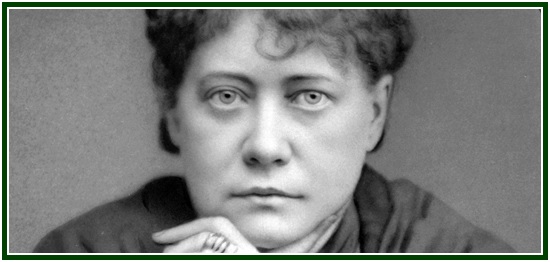
Questions and Answers on a Decisive Issue
Theosophy

0000000000000000000000000000000000000000
Reproduced from “Theosophy” magazine,
Los Angeles, January / February 2007, pp. 56-59.
00000000000000000000000000000000000000000000
Meditation as used by us, is what is called in Sanscrit Dhyana, i.e., want of motion and one-pointedness. The main point is to free the mind from the power of the senses, and to raise a current of thought to the exclusion of all others. “Realization comes from dwelling on the thing to be realized.”
W. Q. Judge says, “To meditate on the Higher Self is difficult; seek then, the Bridge, the Masters. The patient dwelling of the mind on a single thought results in the gaining of wisdom, and it is thus that the true Occultist is developed. Aspiration toward the Higher Self should form part of the daily meditation; the rising toward the higher planes of our being, which cannot be found unless they are sought. Earnest and reverent desire for Master’s guidance and enlightenment will begin the attunement of the nature to the harmony to which it must one day respond. Concentration on a single point in the Teaching is a road to the philosophy; self-examination, a road to knowledge of oneself. To put oneself in the place of another, to realize his difficulties, and thus be able to help him, is that faculty – which when extended makes it possible for the Adept to understand the nature of the stone or other form of consciousness.” Meditation is a good beneficent practice leading to a great end. It is also a great destroyer of the personal idea. (Robert Crosbie, “The Friendly Philosopher”, Theosophy Comnpany, Los Angeles, p. 93)
QUESTION:
How does Theosophy view or define meditation?
COMMENT:
Meditation really means that upon which the heart is fixed. Every one has, deep down in his nature, a constant, ever-flowing undercurrent of thought, will and feeling in some one direction. This current is like a great river draining an immense area of land into which flow hundreds and thousands of smaller streams. The life meditation of the average person is a brooding upon what pleases or what displeases either in physical or metaphysical things – the meditation of the personal being.
QUESTION:
Why is there so little specific guidance about “how to meditate” in Theosophic literature? Sometimes it seems students are even warned against meditation, which runs counter to the many books, courses, and workshops teaching these age-old techniques.
COMMENT:
Meditation in the true sense refers to the activity of certain principles for the most part dormant in every-day life. Their activation, while it gives glimpses of profound states of consciousness not normally accessible, also can arouse dormant passions whose existence is likewise hidden to our daily awareness. We may find that what is imagined to be meditation and concentration is simply a continuation of the activities of the personal mind. These are the “dangers of the lower IDDHI” we are alerted to in the opening lines of the book “The Voice of the Silence”. Our “ignorance” of these dangers allows us to venture into the deep waters of the true nature of Mind before we have developed charts or guides to steer by.
QUESTION:
What are these lower “Iddhi” and how do we combat them?
COMMENT:
The nature of the “lower, coarse, psychic and mental energies” of the personal Mind are discussed by W. Q. Judge, who comments that:
“It is tinted by each object presented to it, whether it be a thought-object or a material one. That is to say, Lower Manas operating through the brain is at once altered into the shape and other characteristics of any object, mental or otherwise. This causes it to have four peculiarities. First, to naturally fly off from any point, object, or subject; second, to fly to some pleasant idea; third, to fly to an unpleasant idea; fourth, to remain passive and considering naught.” (W. Q. Judge, “The Ocean of Theosophy”, Theosophy Company, Los Angeles, p. 56)
As a first step, we need to “take stock” of our nature as it is known to us. Can we give, at will, absolute attention to whatever subject we select, and especially to whatever duty needs to be performed? Can we control the wandering eye and the itching ear and limit them to seeing what we choose to see and to hear what we choose to hear? The constant, watchful attention of our human instrument in all actions and relations of ordinary life, while not usually defined as “meditation” in fact provides the royal talisman for a deeper encounter with our inner nature. As Patanjali states, “Concentration, or Yoga, is the hindering of the modifications of the thinking principle.” (“The Yoga Aphorisms of Patanjali”, William Q. Judge, Book I, #2)
QUESTION:
What happens when this has been achieved?
COMMENT:
Our mind and hearts then begin to turn toward a consideration of the unity of all life, seeing every contact, every communion, every motion of consciousness as the action of the one spirit in and through the countless variety of forms. This is that universal meditation which sees oneself as part of and not separate from the whole of life and all its conditions, whether pleasant or painful, good or evil. This kind of meditation leads us naturally to the consideration of how to fit oneself to work in harmony with all beings, of every grade. It brings us to a study of our own nature and the constant striving to use that nature for the amelioration of the conditions of all.
QUESTION:
Are there any methods to achieve this state?
COMMENT:
In a general way, meditation as a set of performances or practices in a rote manner is not recommended. Those who are most truly able to meditate have the least notion that this is the case. One does not LEARN what one already knows; one USES it. Those who speak often of meditation are the very ones who least of all know what it means. Sometimes we meet those whose whole life is a standing example of meditation yet who, if asked to define the term, would say they could not do so, yet live it daily.
As is well-said in “Light on the Path”, the first two steps in true meditation are negative, not positive. They involve a retreat from a position, not an advance into a new position:
“Before the eyes can see, they must be incapable of tears. Before the ear can hear, it must have lost its sensitiveness. Before the voice can speak in the presence of the Masters it must have lost the power to wound.”
We know that our mind and senses are ill-trained: these steps are meant to reverse their habitual use. As they are shaped into a new direction, little by little we begin to see what the positive steps are – that is, the advance into a new condition of mind.
“The Voice of the Silence” notes that “Unpraised by men and humble is the mother of all rivers…”; this simple statement is a sound antidote for the aggressiveness of the personal mind. In time, it will be seen that intervals of silence are as necessary and as fruitful as periods of communication. One can eat in ten minutes what it takes hours to digest and which provides energy for a still longer period. Few of us in the stressful civilization in which we live are able to realize the great value of thought and reflection in the growth of the soul. To consciously consider what has been read, studied, or experienced helps assimilate the essence of meaning into the inner nature.
W. Q. Judge’s rendition of the “Bhagavad-Gita” and the “Notes on the Bhagavad-Gita” encourage us to see that Krishna and Arjuna are not two separate beings but the crystallization into words of that soundless, invisible and continuous self-communion which goes on all the time between our impersonal and personal minds. As we learn to control and purify the latter, this silent dialogue reveals itself as the essence of true being.
In this Great Journey of inner discovery, “Each man is to himself absolutely the way, the truth, and the life.” (“Light on the Path”, Theosophy Co., p. 5) It is well to keep in mind, however, that, as on any journey, when various experiences – pleasant or unpleasant – are encountered, they are not in themselves the purpose of the trip. A state of bliss, however comforting and elevating, is neither more nor less in itself than a state of bliss. True meditation, then, consists in the constantly evolving answer to the question: what practices lead to knowledge, self-control, wisdom, service?
000
In September 2016, after a careful analysis of the state of the esoteric movement worldwide, a group of students decided to form the Independent Lodge of Theosophists, whose priorities include the building of a better future in the different dimensions of life.
000
E-Theosophy e-group offers a regular study of the classic, intercultural theosophy taught by Helena P. Blavatsky (photo).

Those who want to join E-Theosophy e-group at YahooGroups can do that by visiting https://groups.yahoo.com/neo/groups/E-Theosophy/info.
000